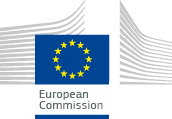PROJECT DESCRIPTION
BACKGROUND
Anadromous (migratory) fishes in the lower Ebro River and the Ebro Delta in Catalonia (Spain) face a number of conservation challenges, including insufficient river connectivity, water eutrophication and contamination, limited availability of freshwater for the river and delta, unsuitable water temperatures, invasive species, overfishing and chemical pollution.
Currently, the conservation status of targeted species in the area is poor. The European sturgeon (Acipenser sturio) is no longer present in the lower Ebro and its delta, and other important populations, such as the European eel (Anguilla anguilla), the twaite shad (Alosa fallax) and the sea lamprey (Petromizon marinus), are below their normal population levels.
The restoration of suitable conditions in Europe’s rivers for migratory fish is addressed through the Water Framework Directive and the European Eel Recovery Plan (Regulation 1100/2007). Several European countries have already tested measures aimed at supporting the recovery of the targeted migratory fish species.
OBJECTIVES
The LIFE MIGRATOEBRE project aimed to restore the ecological connectivity of the Ebro River through mitigation measures designed to improve the river’s hydromorphology. The goal was to improve the long-term conservation of endangered anadromous fish species in the lower Ebro River. The project was also intended to serve as a demonstration ground for ecological improvements in other major European rivers.
The project involved adaptation of all the obstacles in the final stretch of the Ebro River to allow upstream and downstream fish migration. It aimed to increase by 10 times the river spawning habitat available for European sturgeon, twaite shad and sea lamprey, as well as expanding the distribution and growth area for the European eel. In doing so, the project intended to restore the conditions for the natural recovery of healthy and sustainable populations of migratory fish species in the lower Ebro River and Delta within 20-30 years.
The project planned to fully engage and involve local communities and a network of nature managers, farmers, fishermen, anglers, water managers, electricity companies, tourism stakeholders, and regional and local authorities. This collaboration was expected to contribute to the sustainable ecological management and long-term investment in the final stretch of the Ebro River. Additionally, the project also intended to take initial steps towards improving the connectivity of the Ebro River with its main tributaries, such as the Segre River and the middle Ebro Basin.
RESULTS
The project has achieved:
- the successful restoration of the Ebro River ecological connectivity through the interconnection of natural areas within the Natura 2000 network by adapting 2 out of the 3 existing obstacles in the lower Ebro. Specifically, this involved the construction of 2 fishways at Xerta weir and Ascó. The adaptation of the Flix dam was not possible due to the risk posed to migratory fish from the hydroelectric power station and the contamination at the bottom of the reservoir;
- significant contributions to the conservation of endangered anadromous fish species (European sturgeon, European eel, twaite shad and sea lamprey). By the end of the project, it achieved a significant increase in the available spawning area for European sturgeon, twaite shad and sea lamprey, as well as an expansion of the distribution and growth
- ensuring the future presence of reproductive individuals of the European sturgeon (Acipenser sturio) upstream of the adapted river obstacles within 20-30 years. This was supported by the successful first pilot release of 44 juvenile European sturgeons in the lower course of the Ebro. A reintroduction plan for this species can now be developed, drawing on the Action Plan for Conservation and Restoration of European Sturgeon and the technical guidelines for the reintroduction of wild species in Spain;
- a purported increase in the presence of the European eel (Anguilla anguilla) and the twaite shad (Alosa fallax) in the area upstream of the adapted river obstacles in the coming years;
- the thorough collection of a substantial body of data on fish populations in the lower Ebro River and Ebro Delta. A total of 22 VEMCO acoustic telemetry receivers were installed in the riverbed, and 795 fish were tagged with PIT tags and acoustic pingers during 1 113 sampling events. Over the course of these campaigns, 259 110 individuals of 28 different fish species were caught, totalling approximately 21.2 tonnes of fish;
- improvement of the long-term management of the Xerta navigation locks, making them more fish-friendly through an agreement with the irrigation users who manage the ship locks. Furthermore, 6 cameras were installed to monitor fish passing throughout this infrastructure;
- more than 158 000 unique visits to the itinerant exhibition dedicated to the project. Furthermore, communication and awareness raising activities, including the establishment of a volunteering network, reached approximately 260 000 people.

